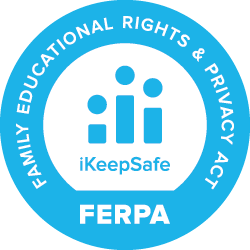DEV VERS - You Have the Power
In this activity, you'll use mathematics and geography skills to investigate the power of recycling.
Resource Title:
You Have the Power
Description:
In this activity, you'll use mathematics and geography skills to investigate the power of recycling. You’ll practice counting by tens, too.
Target Grade Level:
Grades 5-8
Discipline or Course (Audience):
Science
Time Frame:
Two 45-minute class periods without extensions
Suggested Grouping:
Individual, Pairs, 3-4 students
Educator Prep:
Preparation Directions:
- Gather materials.
- Prepare Supporting Material - Student Activity Pages: You Have the Power (printable PDF).
- Each group has a different challenge. The nature of the materials they may need to do their research and prepare their communication tools will vary. You might gather additional material.
Share some amazing and interesting recycling facts:
- The United States annually recycles enough copper to provide the copper content of more than 25,000 Statues of Liberty.
- Each year, recycling aluminum cans in the U.S. saves roughly 8.7 billion gallons of gasoline—enough to fuel approximately 21 million vehicles for an entire year.
- Each year, the United States recycles roughly 1,370 metric tonnes of gold—enough to produce a thin sheet covering approximately 55 square miles.
Have students think about how people came up with these numbers. Did someone actually go out, for example, and take exact measurements on every vehicle on the road to see how much fuel each one consumes in one year? Discuss the idea of using estimations to make powerful statements! Have students consider the two following statements and discuss the differences. Is one more powerful than the other, and why?
Each year, recycling aluminum cans in the U.S. saves roughly 8.7 billion gallons of gasoline—enough to fuel approximately 21 million vehicles for an entire year.
Explain that the man behind the idea of making these kinds of estimations was a famous Italian physicist named Enrico Fermi, born in 1901. He used to like to challenge people to estimate big numbers! Through estimation, he was able to get pretty close to actual numbers on a few “big” and sometimes unusual questions. His most famous “Fermi” question was:
How many piano tuners are there in New York City? (Anyone?)
Explain to students that they are going to undertake a recycling question that will require them to do some research, and then some calculations and estimations based on powers of 10. Their work will be important because their estimations will be used to create powerful messages to illustrate the power of recycling in their community!
Sample estimated answers: (actual estimations will vary)
* These are not actual, correct figures but rather a way to illustrate how the math is carried out. Actual answers will vary depending on how many cans, bottles, or newspapers a family is estimated to use / week in the classroom.
Soda Cans
A typical soda can is about 6 inches high (15 cm). If we lined up all the cans our class and their families use in a year, how many miles would that line go?
An example is based on each person in the family using one can/day. For a family of 4, this would be: 28 soda cans per week (1 can x 4 people x 7 days). If all numbers are rounded to the nearest ten, we get:
- 30 soda cans/week/family (28 cans, rounded up)
- 20 families/classroom
- 50 weeks in a year (52 weeks, rounded down)
30 soda cans/per week/per family x 20 families x 50 weeks in a year = 240,000 soda cans
240,000 soda cans x 6 in = 1440000 in / 12 = 120,000 feet 120,000 feet/ 5280 feet/mile = 22.72 miles
Plastic Bottles
The energy used to make 15 plastic bottles is about what you’d need to drive a car, depending on its size, three to four miles. For our purposes, we will use three miles. Start at your school. Use a map to estimate how far you could go in a car, using the energy of all the class’s bottles that could be recycled in a year.
This is an example based on each person in the family using approximately five bottles a week. For a family of four, this would be 20 bottles per week (5 bottles x 4 people).
- 20 bottles/week/family
- 20 families/classroom
- 50 weeks/year (52 weeks, round down)
20 bottles/week/family x 20 families/classroom x 50 weeks/classroom = 20,000 bottles
- Find the number of 3-mile trips:
- This means you have enough bottles to power about 1,333 separate 3-mile trips.
- Calculate the total distance:
- Now, multiply the number of trips by the distance of each trip (3 miles).
The complete equation looks like this:
(20,000÷15)×3=4,000 miles
So, with 20,000 plastic bottles, you could drive approximately 4,000 miles!
It takes about 6 to 10 post‑consumer PET bottles to make one recycled polyester t‑shirt. How many t-shirts could be made from the energy saved by recycling all the bottles that all the families in your school use in a year?
- 20,000 bottles/classroom
- 10 classrooms/school
- 2 bottles/t-shirt
20,000 bottles/classroom x 10 classrooms = 200,000 bottles/2 bottles/t-shirt = 100,000 t-shirts
Newspapers
Question: Recycling about 750 newspapers can save one full tree. How many trees could your class save if all of their family’s papers were recycled?
This example is based on each family in the class reading approximately one newspaper per day, which is approximately 375 newspapers per year, rounded to 400.
- 7 newspapers/week/family or
- 400 newspapers/year/family (375, rounded up to 400)
- 20 families per classroom
400 newspapers/year/family x 20 families = 8,000 newspapers
8,000 newspapers/100 newspapers/2 trees = 800 x 2 trees = 1600 trees
If there are approximately 500 trees to each acre of land in a forest, how many acres of forest could all the families in your entire school save?
- 1600 trees/class
- 10 classes/school
1600 trees/class x 10 classes = 16,000 trees/500 = 32 acres of land
How many schoolyards would this be equivalent to? (Need to know the size of your schoolyard)
2 acres/schoolyard
32 acres/2 acres/schoolyard = 16 schoolyards. The school could save a forest the size of 16 schoolyards!
Glass Bottles
Recycling two glass bottles can power a 50‑watt light bulb for about 16 hours. How many hours of light would there be with the energy saved from the bottles all the families in your class use in a week if you recycled all of them?
Example based on each person in the family using 3 glass bottles/week (an average American uses about 164 glass bottle per year). For a family of four, this would be (3 bottles x 4 people), approximately 12 glass bottles/week.
- 10 glass bottles/family/week (12 bottles, rounded down)
- 20 families/classroom
- 2 bottles/lightbulb/10hours of light
10 bottles/family/week x 20 families = 200 bottles/week
200 bottles/2 bottles/lightbulb = 100 light bulbs x 10 hours of light = 1000 hours of light (about 42 days’ worth!)
The energy saved from recycling 5 glass bottles can power 1 school computer for an hour. How many hours could a school computer be powered for if it could run on the energy saved by the class and their families if they recycled all the glass bottles used in a week?
200 bottles/week /5 bottles/computer/hour = 40 hours
The average American generates about 60 pounds of glass container waste annually—roughly equivalent to 110 standard bottles. The example on the student card uses a traditional light bulb. A new energy-efficient bulb uses 1/10 as much. Another fact: Recycling one glass bottle saves enough energy to power a school laptop for about 25‑30 minutes. If each student recycles one bottle per day, they'll accumulate roughly 12 to 15 hours of laptop‑power equivalent over a school year — enough to cover typical school computer time.
Warm Ups
For the Warm-up question, an example of a question to propose to students might be: “How many giant steps of [pick a student or yourself] would it take to reach the [choose a location like the cafeteria/athletic field/ or principal’s office]
Making Estimations
The groups have been provided with some information on the approximate equivalence of the (energy or raw material) savings of recycling one of the four materials. In each of the challenges, some basic facts have been rounded to the nearest ten.
Depending on the level of students, the estimations can be done visually (with manipulatives), with sticky notes prelabeled with 10s on them (create visual displays of the information as histograms on the classroom’s board or wall) or on paper with calculators.
Discuss the importance of starting with a known, or reasonably close to known, number on which all your other calculations will be based when conducting large-scale estimations. Students should be discussing ways to determine the # of cans, bottles, or newspapers their families use, on average, in one week, whether through discussion, class collaboration, or collecting data from home or discussing with family members. Allow the students to determine how to do this so they don’t begin with a completely random number. The power of a Fermi estimation is that when checked against reality, it comes close to actual values! You might have students collect actual baseline data to establish how many soda cans, glass bottles, plastic bottles, and newspapers each family uses in one week, to share with the class and use the class figures to carry out further estimations.
Supporting Resources for Implementation:
Remote Learning Adaptations:
This resource is appropriate for remote learning; no adaptations or modifications are necessary.
STUDENT CONTENT BELOW
Meet Enrico Fermi. He was an Italian physicist who was born in 1901. He loved to challenge people to estimate big numbers. He’d ask questions like:
- How many drops of water are in Lake Erie?
- How many school buses parked end-to-end would it take to go from your town to the state capital?
To answer these questions, you would need to know a little mathematics, a little geography, and be able to put these skills together. Estimations are guesses but they are backed up by a lot of knowledge and skills. These are the basic skills that a scientist might use to solve important questions about the environment, too. One of the challenges of recycling is that most people don’t believe that something small they do can make a difference. In this activity, you will collect some baseline data from your classmates and their families about their use and recycling of different products to make larger Fermi-like estimations. Your work will be important, because you will use your estimations to convey the message that little steps can make big differences.
Materials:
- Device with internet access
- Supporting Material - Student Activity Pages: You Have the Power (printable PDF)
- Map of the community or the world
- String or yarn (for measuring distances on the map to scale)
- Sticky notes
- Scale (for weighing a newspaper)
- Calculators
- Materials for preparing a presentation to the community: markers, glue, paper, poster board, rulers, computers
- Other: materials as needed for conducting estimations or creating presentations
Safety Notes:
- When using technology, engage in safe, legal, and ethical behavior; this applies to devices (hardware), applications or programs (software), and interactions with others.
- There are no anticipated physical safety risks associated with this Activity.
Warm-Up Question
- With a partner, consider the challenge your teacher has prepared for you. Brainstorm how you might estimate it based on some basic measurements and knowledge.
- Estimate the answer using the methods you and your partner have discussed.
- Test your estimation. How far off or close were you? Why do you think that is?
Making Estimations
- Your group will be assigned to collect data on one of the following commodities: soda cans, plastic bottles, newspapers, or glass bottles. Some teams might be assigned the same challenge.
- Estimate how many soda cans, glass bottles, plastic bottles, or newspapers the average family in your class uses in one week. How can you estimate this? There may be different ways to do this. Share ideas!
- With your team, complete your estimations for the challenge you have been assigned in Table I on the student data sheet. Explain how you created the figures by showing your math in the correct quadrant on the student data sheet.
- Using the baseline estimations you created, complete the estimations for Table II. Show the math.
- Present your findings to the class. Describe how you came up with your estimate and what your message would be to your community to impart the power of recycling!
Reflect and Apply:
Using your estimate, could you develop a poster, flyer, presentation, podcast, or video incorporating a powerful statement to encourage the community to recycle?
Your message might begin with: “Imagine if each of us recycled just [X cans, bottles, newspapers] every week, then we could . . . [build x, save as much energy as, or travel to . . ., etc]”.
Extension:
Create your own Fermi question or challenge and try to answer it based on the power of estimation! Share with your classmates!
Research and learn more about Enrico Fermi using the internet and other library resources.
Journaling Question
Reflect on the estimations presented by your other classmates. Discuss at least two new things you learned and the impact they might have on your recycling plans!






